New products at Crocus
by Sarah - July 23rd, 2009.Filed under: Crocus, New Products.
New lines today at Crocus
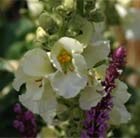
mullein £7.99
Position: full sunSoil: lean, well-drained, alkaline soilRate of growth: fastFlowering period: June to AugustHardiness: fully hardyMagnificent tall stems rise out of felted grey-green basal leaves and are studded up their length with many open cupped flowers in cool ivory colour. Each flower nestles a clutch of golden stamens at its centre. Provides rapid stature and volume to the sunny border, with flowers persisting from early June to August. This giant of a plant will compliment the horizontal profiles of Achilleas, Verbena bonariensis and Foeniculum. Try also with Echinops ritro 'Veitch's Blue'.Garden care:Apply a 5-7cm (2-3in) mulch around the base of the plant in autumn to protect from winter extremes, taking care not to cover the crown. Stake in spring with bamboo canes or twiggy prunings before the flowers appear. Mullein moth caterpillars can be a problem, pick off the insects in early June as soon as they appear. Remove faded flower spikes.It is worth keeping in mind that these plants are mainly biennial, so although they usually self-seed freely, the plant will only live for two years.
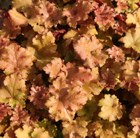
coral bells £6.99
Position: full sun or partial shadeSoil: fertile, moist or well-drained soilRate of growth: averageFlowering period: JuneHardiness: fully hardyA terrific heuchera that's perfect for adding colour to the garden. In late spring, sprays of brownish flowers appear but this heuchera is really grown for its exciting foliage. It has rich, shiny, undulating leaves in a range of colours from amber to peachy bronze with hot pink undersides. The evergreen foliage is perfect edging a border, along a path or even in pots on the patio. Garden care: Heucheras do not like dry soil. Remove tatty foliage in autumn. Lift and divide clumps every couple of years in early autumn and replant with the crown just above the surface of the soil. Apply a generous 5-7 cm (2-3 in) mulch of well-rotted organic matter around the crown of the plant in spring.
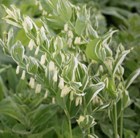
common Solomon's seal £6.99
Position: partial shadeSoil: fertile, humus-rich, moist, well-drained soilRate of growth: average to fastFlowering period: May to JuneFlower colour: creamy-whiteHardiness: fully hardyIts graceful, arching stems of dark green, slightly pleated, leaves streaked with pale green and white are enough to earn this plant its place in the garden. But in early summer, when these stems are strung with clusters of green-tipped, creamy flowers that hang like little bells, it is simply gorgeous. The flowers are followed by small, black fruit. Solomon's Seal prefers a cool position in a shady spot and looks wonderful in a woodland setting among shade-loving ferns. Garden care: Cut down to the ground in autumn. Lift and divide large colonies in early spring, taking care not to damage the young shoots. Apply a mulch of well-rotted leafmould or garden compost in spring.

coral bells £6.99
Position: full sun or partial shadeSoil: fertile, moist or well-drained soilRate of growth: averageFlowering period: May to JulyFlower colour: pure whiteHardiness: fully hardyA bright and lively variety of these ever popular plants. The new leaves on this one emerge chartreuse green in spring and turn to an acid lime colour throughout the summer. They form loose, evergreen mounds and their colour makes a great contrast to darker greens in the border. The sprays of small white flowers in mid to late summer are a bonus. Try planting them in shadier corners to bring in a bit of light, or pot them up and surround with seasonal bedding for a patio treat. Garden care: Lift and divide large clumps in early autumn and replant with the crown just above the surface of the soil. Apply a generous 5-7cm (2-3in) mulch of well-rotted organic matter around the crown of the plant in spring.
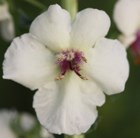
moth mullein £6.99
Position: full sunSoil: lean, well-drained, alkaline soilRate of growth: averageFlowering period: May to JulyHardiness: short lived perennialElegant slender spires have widely space white flowers with a distinct violet eye and golden stamens. Basal rosettes of gloss oak-like leaves. Flowers achieve a rosy pink flush as they fade. This plant is most successfully grown in a lean, well-drained gravel or scree, where a meagre diet avoids the need for staking. On richer soils it may need twiggy support. A good subject for the sunny border, cottage-style plantings and gravel gardens.Garden care:Apply a 5-7cm (2-3in) mulch around the base of the plant in autumn to protect from winter extremes, taking care not to cover the crown. Stake in spring with bamboo canes or twiggy prunings before the flowers appear. Mullein moth caterpillars can be a problem, pick off the insects in early June as soon as they appear. Remove faded flower spikes.It is worth keeping in mind that these plants are mainly biennial, so although they usually self-seed freely, the plant will only live for two years.
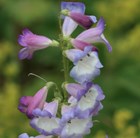
beard tongue £5.99
Position: full sun or partial shadeSoil: fertile, well-drained soilRate of growth: average Flowering period: July to September Flower colour: pale lilac-blueHardiness: borderline hardyA large leaved penstemon that bears big, bell-shaped flowers from midsummer to autumn. It is one of the oldest hybrids in cultivation today and has been on the scene since 1931. It was first discovered by the nursery John Forbes of Hawick, who from 1870 until 1968 was the biggest Penstemon growers in the world. The fact that it has stood the test of time will give an indication of its many good qualities, and this has been backed up by being awarded the Royal Horticultural Society's Award of Garden Merit. The soft lilac-blue shades are tinged mauve-pink outside and have a white throat, and they look great in a cool themed border.Garden care: Remove the faded blooms regularly to prolong flowering. Apply a dry mulch around the base of the plant to protect the roots from frost damage in autumn. Leave the old foliage to protect the new shoots from frost and then cut it back by a third in spring.

chamomile £5.99
Position: full sunSoil: moderately fertile, well-drained soilRate of growth: fast Flowering period: June to August Flower colour: yellow centres with white petalsOther features: good cut-flowersHardiness: borderline hardyA fast growing, carpeting, evergreen perennial that has delicate finely cut silver foliage that becomes greener in winter. The foliage has a refreshinly pungent or fruity smell when crushed. In early summer the simple, long lasting yellow-centered, white daisies emerge and provide a mass of colour. A great plant for a naturalised planting scheme as it will self-seed freely. It is known to be resistant to deer.Garden Care:Lightly trim the plant after the first flush of flowers to encourage more to come. Cut it back harder when the flowering has finished to keep the plant nice and bushy. Avoid excessively wet soils in winter.






